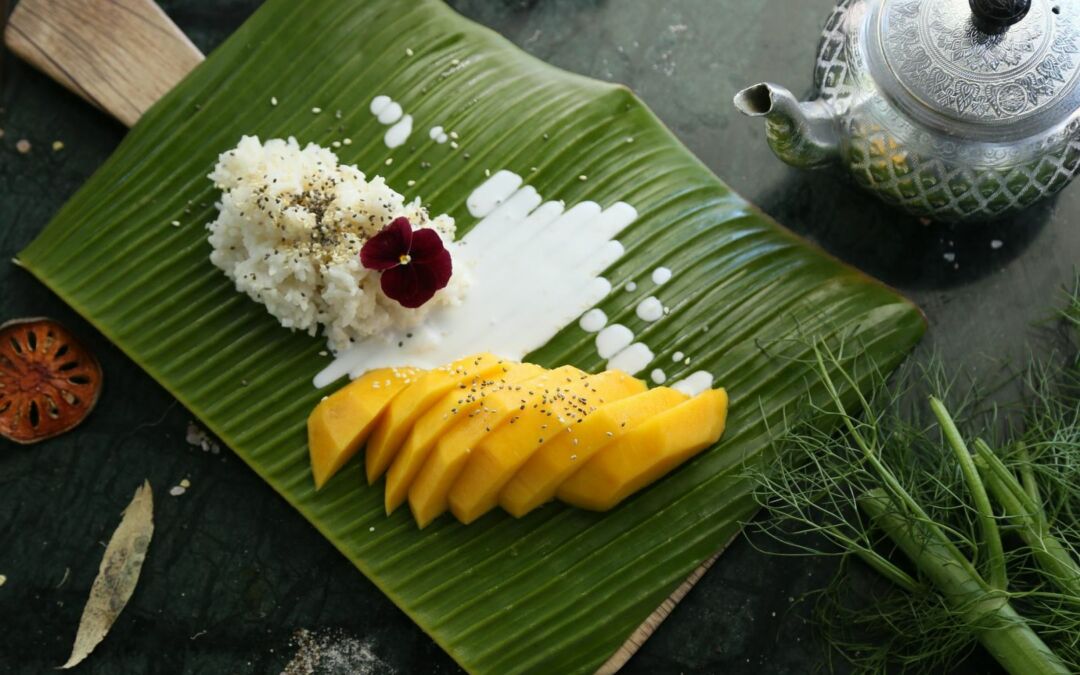If you have a passion for Asian cuisine, then you’re certainly not new to the Thai culinary scene. Perhaps you’ve already tried your hand at making a homemade Tom Kah Gai soup or whipping up a batch of Pad Thai, or maybe you’ve even started looking up some sticky rice recipes. If that’s the case, and you’re not shy about taking your culinary skills to adventurous new terrain, why not take a journey into the world of Thai desserts?
Thai sweetness at its best!
Whether it’s a decadent tapioca pudding with coconut milk or fried bananas with vanilla bean ice cream, there are three staple characteristics that embody almost all Thai sweets. These main essentials will help you understand not only the components needed for sweet and savory treats, but also how they all tie together to create simple, yet delicious, masterpieces.
Flavor & Texture Wins
When thinking of Thai food, there’s no doubt that what instantly comes to mind are robust curries and bowls of steamed white rice. However, if you pay close attention to the sheets of textures and flavors in your beloved Papaya Salad or the way a Thai Red Curry so easily soaks up sticky rice, you’ll notice that these plates are designed not just for taste’s sake, but also for the experience as a whole. Layering different flavors and textures are crucial qualities found in Thai plates, which are also reflected in their sweets.
A perfect example is the Thai classic Black Beans Sago, also known as Sa Koo Tua Dum. This soup-like dessert marries starchy red adzuki beans, gelatinous tapioca pearls, and velvety coconut milk into one mouth-watering medley of savory and sweet spoonfuls, of which are sure to amaze your taste buds. Much like their Southeast Asian neighbors, Thailand doesn’t stop experimenting with textures. Khanom Bueang, or Thai Crispy Pancakes, are like crunchy tacos, which are then stuffed with sweet cream and topped with salty shredded coconut or Foi Thong, fried egg strips.
Two Must-Have Ingredients
It’s no surprise that coconut milk is one of the key components you’ll find in almost every Thai sweet. After all, it’s made its way into almost every other Thai dish. Whether cooked separately and poured on top of fresh fruit, like a hot soup topping of sorts or made into a custard with rosewater and served alongside sticky rice, coconut milk makes an appearance in almost all Thai desserts. Time to stock up! For a simple coconut and rice recipe you may want to check out the best coconut rice recipe for if you want a quick sweet treat.
Next on our list of key ingredients – rice. Rice comes in many shapes and forms in Southeast Asian cooking, and even more so in Thai desserts. As a start, rice is often used to make the dough in classics like Boua Loy, an authentic dessert which consists of sticky rice flour balls that are drenched in a coconut and brown sugar syrup.
Bring on the Exotic Fruit
Much like its Southeast neighbors, Thailand doesn’t stop experimenting with its abundance of fresh fruit. Fruit is the third and most predictable ingredient found in Thai desserts. Almost all the classics will show up with some form of exotic fruit, some of which you may have never even dared to buy at the market, let alone cook with. That all changes now.
Lychee, Mangosteen, and Durian – you name the exotic fruit and there’s a delicious Thai delicacy to accommodate, and the best part is, most of these fruits aren’t as intimidating as they look. Check out some of our favorites like Banana-Lychee Dessert in Coconut Milk, the well known Fresh Mango with Sticky Rice, and, if you’re looking for a challenge, this Dragonfruit Agar Agar Cake.
Get the Right Rice
Whether you decide to go for a sweeter or spicier dessert, chances are you’ll come across Thai sticky rice – and we can’t let you go without giving you the low down. Choosing the right grain is key to the desired texture and taste of good sticky rice. Good news is, we’ve got you covered!
Because of its aromatic quality and slightly sticky texture when cooked, we recommend our Mahatma® Short Grain Rice for your sticky rice creations. This variety cooks right up to the perfect consistency, every time. After all, authentic recipes are only possible with the authentic rice.
For those looking to experiment and make their own rice flour, we recommend any of our long- or medium-grain rice varieties like Mahatma® Jasmine Rice.
